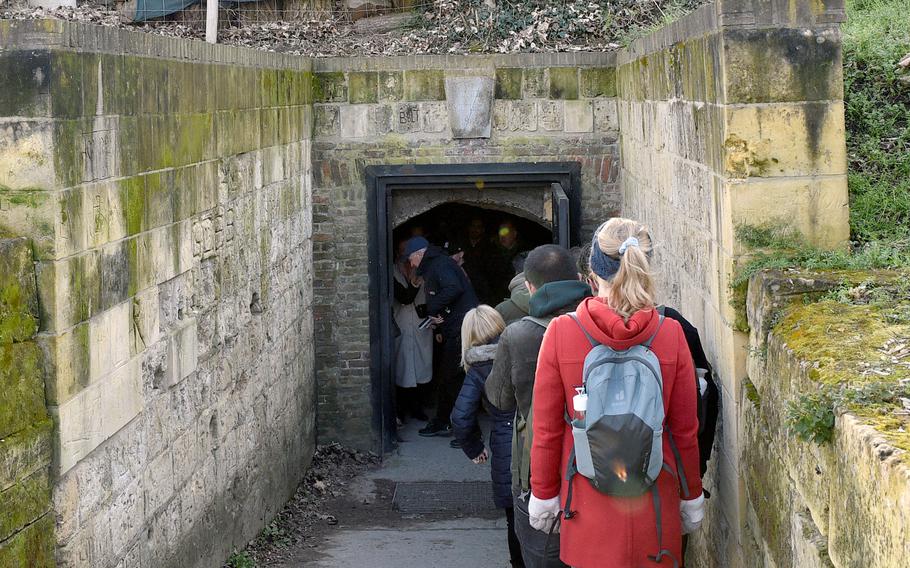
People wait outside the entrance of the Noord Grotten, or North Caves, for a tour in Maastricht, Netherlands, on Feb. 27, 2023. (Matt Wagner/Stars and Stripes)
On the wall near the start of the Maastricht Underground tour of the Netherlands' Grotten Noord and De Kluis (North Caves and The Vault) is a painting of a priestess of the ancient Roman goddess Vesta that comes with a warning.
It highlights the importance of light in the manmade tunnels, which have been burrowed under this city about 20 miles southwest of Brunssum for hundreds of years.
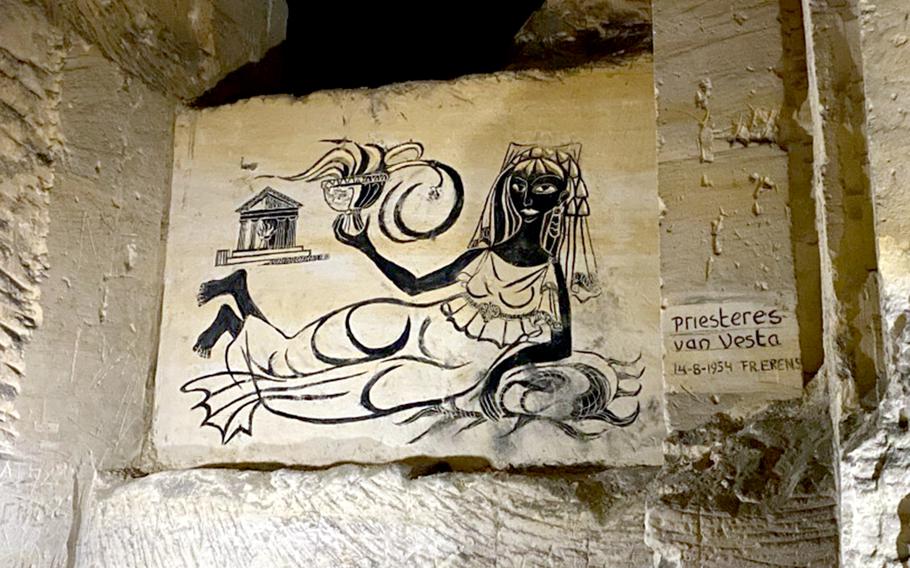
A charcoal painting of the Priestess of Vesta, Feb. 27, 2023 in the Noord Grotten in Maastricht, Netherlands. On a nearby side wall is a warning about light and fire in the tunnels. (Matt Wagner/Stars and Stripes)
The tour of the caves makes plain why the entrance painting depicts a person who kept the sacred fire burning in the deity’s temple. Without artificial light, the chilly caves are pitch black, and considering the labyrinthine layout of tunnels still accessible, a person easily could become lost to time.
Just as light symbolizes hope, the caves themselves were Maastricht’s hope for hundreds of years, as the tour of 1 hour and 40 minutes emphasizes.
The caves originated as stone mines used by residents in the buildings above. The limestone unearthed was found in buildings as far away as the German cities of Aachen and Cologne.
Over hundreds of years, residents went underground, digging out a stone per day to take to the surface. That is, until the early 20th century, when a quarry outside town made the stone mines useless, according to the tour guide.
The owner at that time decided to turn the caves into a tourist attraction.
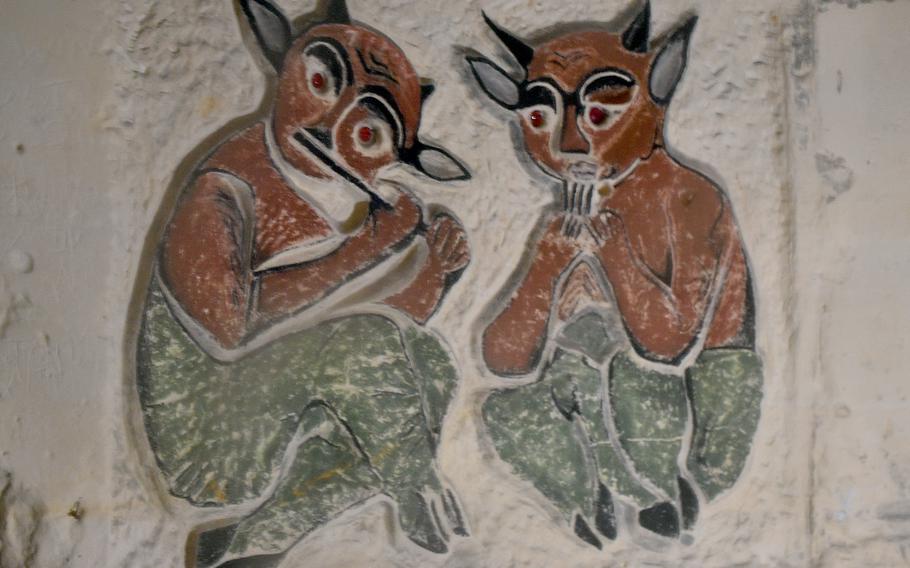
Charcoal paintings, like this one seen on Feb. 27, 2023 in Maastricht, Netherlands, adorn the walls of the Noord Grotten, or North Caves. The owner turned the former stone mines into a tourist attraction in the early 20th century. (Matt Wagner/Stars and Stripes)
That transformation included the addition of charcoal paintings on the walls. Some of the artwork has a connection to the city, but most of it has little to do with stones, mining or anything else related to caves.
Also hidden in the maze was De Kluis, a place of great significance during World War II, when it held more than 750 Dutch masterpieces. Rembrandt’s famous “The Night Watch” was among them.
Built to store the artwork away from the war’s destruction, De Kluis wasn’t hidden from the Nazis, as German soldiers slipped down to check out the work during the occupation.
De Kluis is now empty – and for good reason. The cold, humid conditions are terrible for paintings.
Still, it was impressive to see the small room with racks that held the art.
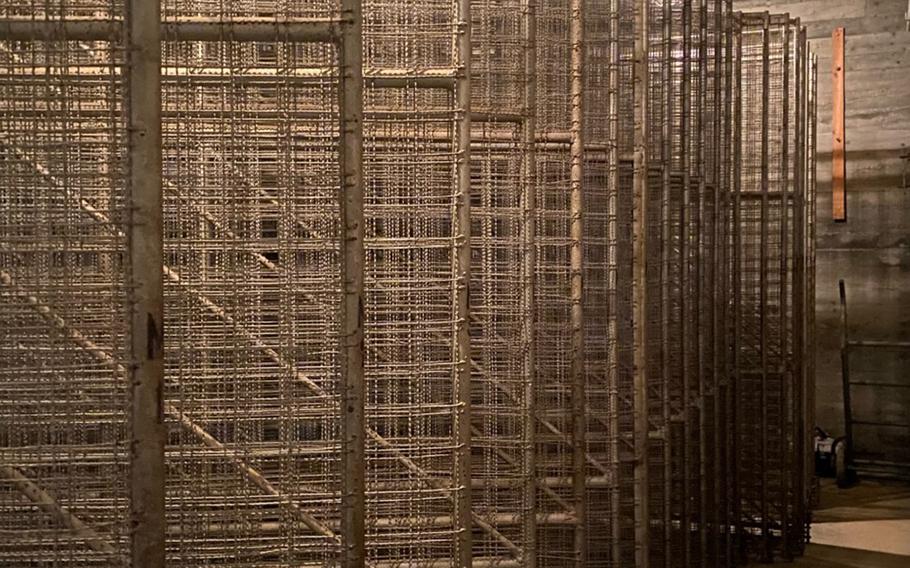
The racks of De Kluis (the Vault) held more than 750 Dutch masterpieces during World War II. The room was empty during a Feb. 27, 2023, underground tour in Maastricht, Netherlands. (Matt Wagner/Stars and Stripes)
Also revealed on the tour were other great nuggets, such as the role the tunnels, which stretch into Belgium, played in the smuggling of supplies, refugees and Allied pilots between the two countries.
The tour breezed by so quickly that I didn’t realize how much time had elapsed until it was over. Also, our guide, Frank, was a font of knowledge and showed it across numerous languages.
Aside from the tour, which I highly recommend, Maastricht boasts some aboveground attractions as well that will leave an impression. Fort Sint Pieter and Sint Pietersberg give offer great city views and trails if you need to recover from the darkness of the tunnels.
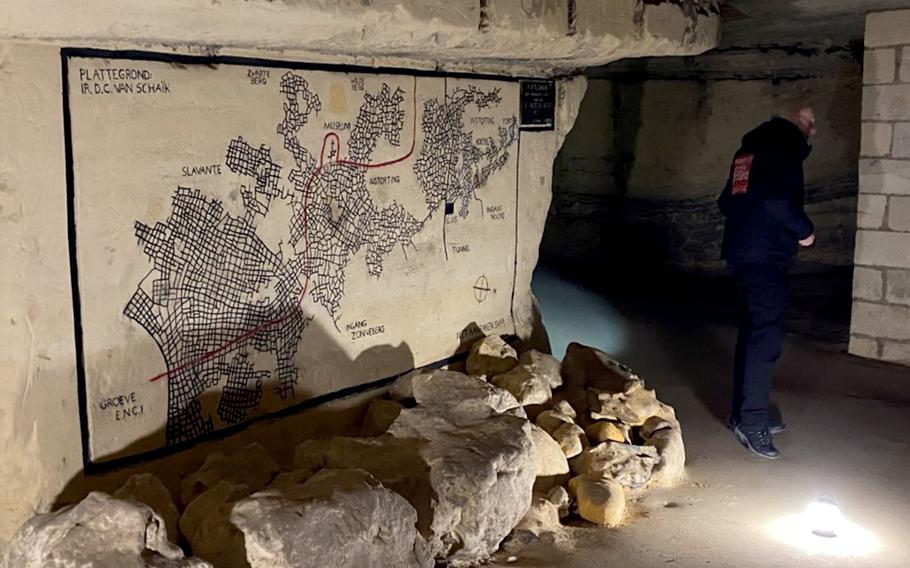
The cave system underneath Maastricht, Netherlands, shown here during a tour on Feb. 27, 2023, once stretched for 155 miles. Everything to the left of the red line disappeared after the construction of a stone quarry. (Matt Wagner/Stars and Stripes)
On the QT
Location: Maastricht Underground Ticket shop, North Caves and Fort St. Pieter, Luikerweg 80, Maastricht, Netherlands
Cost: 14.80 euros for the tours with “De Kluis.” For tours without it, 7.95 euros for children ages 4-11 and 9.50 euros for 12 and older.
Information: Online: exploremaastricht.nl/en/Maastricht-underground to see times for tours in English and to buy tickets.